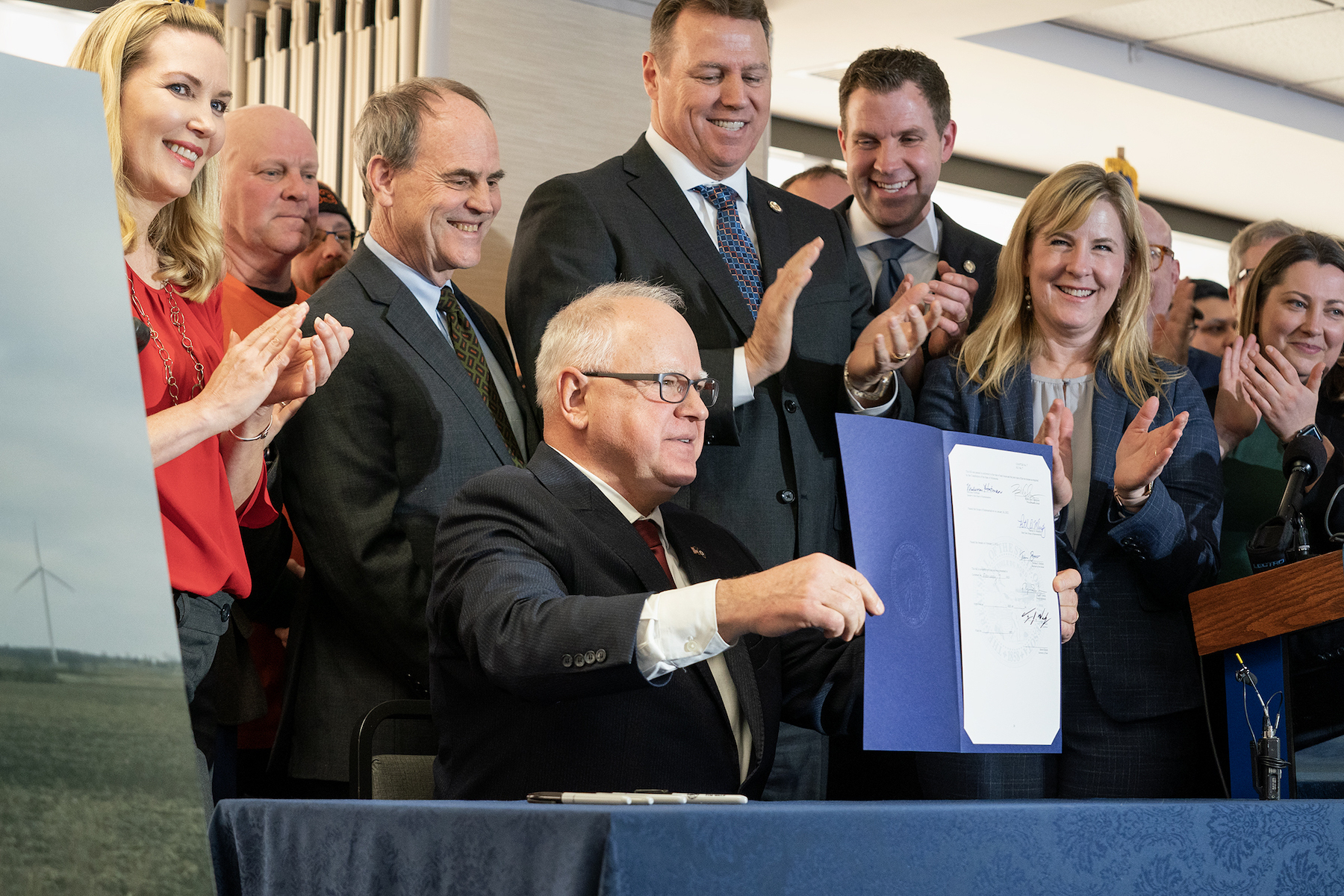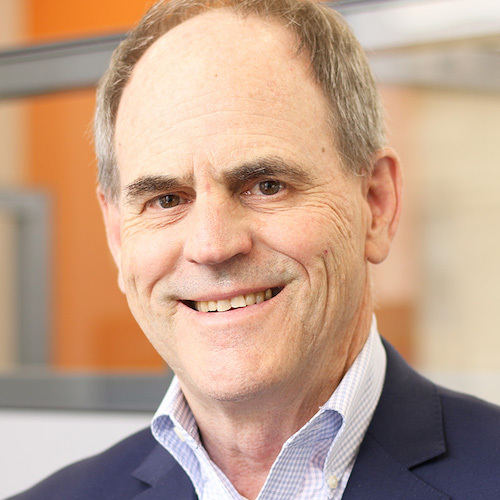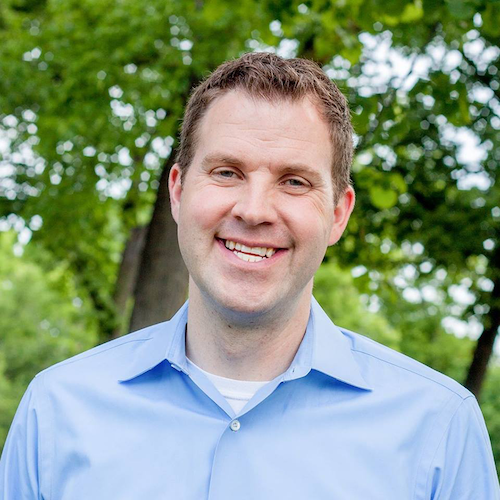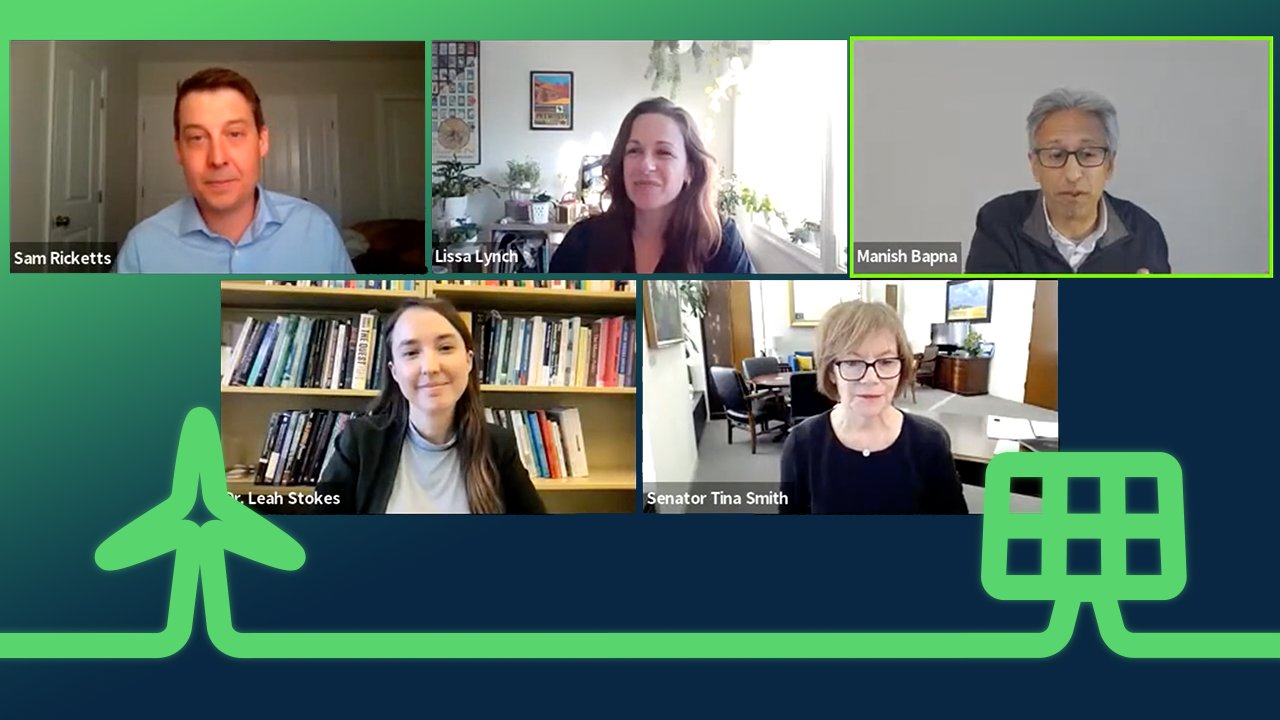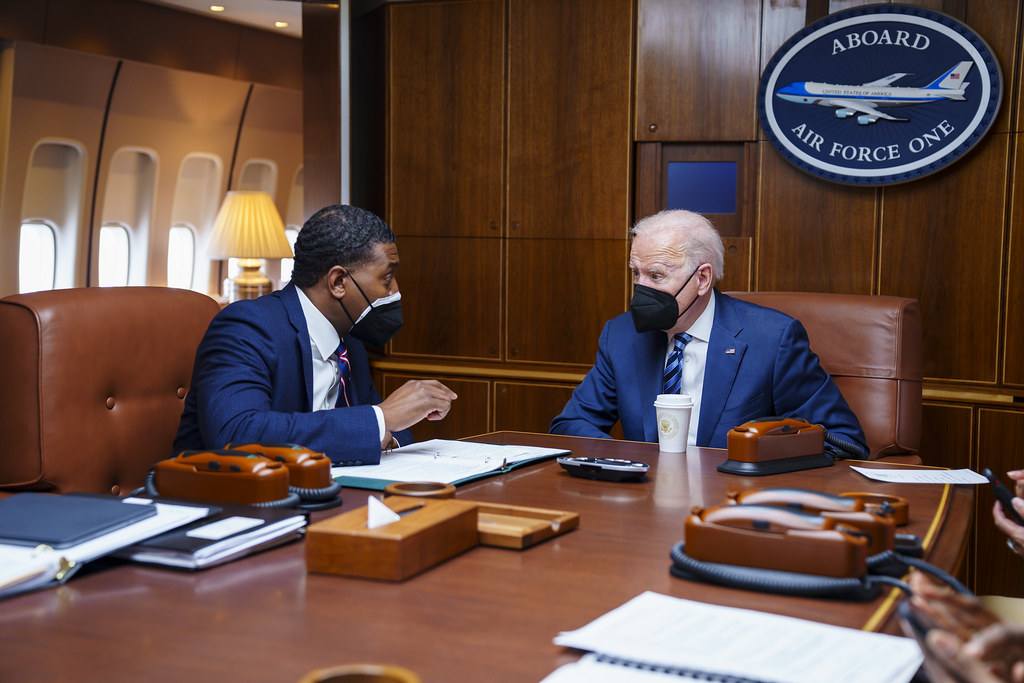Noble: We're in a regional energy and electricity economy and in partnership with other states and regions–the Mid-American Independent System Operator, which manages its electrical system together. And that extends literally from the top of Manitoba all the way to the Gulf of Mexico. So we have a lot of collaborating utilities and collaborating states. And also, Minnesota is very, very blessed geographically, being just west of some of the windiest places in the world and just south of hydro and places with wide-open spaces nearby. So transmission ties us together. And the other way to remember it is that when it's not windy in Nebraska, maybe it's windy in Minnesota. And when it's not windy in Minnesota, maybe it's windy in Nebraska.
We need to have our grid tied together by transmission connectivity. It just makes everything cheaper, everything more reliable and everything easier to achieve. You know, if we had no new transmission investment, we would be pushing up against the limits of these two resources that are variable. But with transmission, you get much, much, much higher penetrations.
And the one other thing I would add is if you look at the whole climate change puzzle–the electricity sector, as is obvious to everyone, is just a pie wedge. And we need to decarbonize transportation and decarbonize buildings and decarbonize heavy industry. But the first and most promising and cheapest way to decarbonize those other sectors is to electrify everything we can.
Rep. Long: I'll just add briefly that in the 100 percent clean energy bill, we included several provisions to help speed up the regulatory process for transmission in Minnesota, and those were broadly supported stakeholder agreements. But we knew that having adequate transmission was critical to having the ability to build out the 100 percent clean energy system that we need. So that was a key part of our bill as well.
Evergreen: So another key consideration for this bill was environmental justice. Can you, Michael, tell us a bit about what this new clean electricity standard would mean for environmental justice communities?
Noble: Again, I want to compliment, especially by name, the 100 Percent Campaign for broadly organizing the EJ community and making it a full partner in the debate and discussion and passage of this bill. Lots of door knocking, grassroots support, new voices, new organizations, organizations that do their primary work in languages other than English were full partners in the 100 Percent Campaign.
But I think a complement to the EJ story is the just transition story. How do we take care of the communities where the old fossil fuel jobs are being lost as we transition? I see these as two pieces of the puzzle that fit together. Environmental justice and just transition are the justice agenda. And the bill is not a full EJ bill. The bill has several important EJ components to it. It defines what an EJ community is. It makes sure that EJ communities’ top policy priority is addressed, that the waste energy facility in a brown and Black community in North Minneapolis is not approved as a renewable energy resource in the bill. But it also really strongly deals with these transitional issues for communities that were hosts to the fossil fuel industry and, you know, kept Minnesota's energy system reliable over these last 50 years.
We want to make sure that those communities on both sides of that justice agenda are brought into the clean energy vision and the clean energy future.
The other thing to say is that this bill isn't going to do everything. It is sort of a clean policy priority, driving to get all the carbon out of the electricity supply and we have four months left in our legislative session. I strongly predict there'll be plenty of other debates about energy policy, climate policy, and environmental justice as well.
Rep. Long: We added a few provisions in the bill, too, that spoke specifically to environmental justice. So one is that the bill does include the option for utilities to seek changes to the standard if they believe that there are issues to affordability and reliability for the utility. And that's in our existing renewable energy standard and was something that was carried forward.
But we wanted to make sure that if that was a conversation at the Public Utilities Commission, that environmental justice concerns would be taken into account when making those decisions. And so that was explicitly included in the bill. And then there was also a facility that's located near a predominantly Black community in Minneapolis that's a waste energy facility. And under our old renewable energy standard, it counted as renewable energy.
And we heard a number of concerns from that local community that treating burning trash the same as the wind and the sun was deeply offensive to them and didn't fully appreciate the air pollution that was cumulatively contributing to the worst asthma rates in the state in that community. So we removed that from the definition of renewable energy standards.
That facility will no longer be able to sell renewable energy credits or count towards the utility's renewable energy standards. That was an important win for the environmental justice community as well.
Evergreen: What lessons have you learned in this fight and how might other legislators and advocates in other states make something similar happen back at home?
